When the GSX1300R Hayabusa was launched in 1999, you’d have got long odds on it still being in production a quarter of a century later. After all, Suzuki had named the powerful four-cylinder bike after a Japanese peregrine falcon to highlight the fact that it had been created to snatch the unofficial World’s Fastest Superbike crown from Honda’s Super Blackbird – hence the peculiar, droop-nosed bodywork designed to cheat the wind at high speed.
The Hayabusa was good for a genuine 190mph and gobbled up the Blackbird, but Suzuki’s timing seemed flawed. Not only was the beaky bike set to be challenged by Kawasaki’s even more powerful ZX-12R, but its wings were about to be clipped by the Japanese manufacturers’ voluntary agreement limiting top speeds to 186mph (or 300km/h). Motorcycling’s fixation with em-pee-aitch was coming to an end.

Yet here we are towards the end of 2024, with the Hayabusa still in production. Its unique shape, far from proving a fatal flaw, served to elevate it from the crowd and highlight the 16-valve Suzuki’s searing speed. Its slight top speed reduction, introduced for the new millennium, seemed to enhance rather than diminish its reputation.
Since its intorduction the Hayabusa has undergone two revamps and notched up approximately 200,000 sales, while outlasting the Super Blackbird and ZX-12R, not to mention Suzuki’s own GSX-R1000 in most markets. It has been modified to break speed records and win countless drag races and custom contests. Few single models have been remotely as successful for as long.
If there is a secret to that success it is perhaps that the Hayabusa has always been not just a very fast motorcycle but a very good one. The original bike’s UK launch was at the Bruntingthorpe proving ground in the Midlands, where I recall the Suzuki’s speedometer needle sweeping to 180mph thrillingly quickly, and continuing to a doubtless optimistic 205mph with my chin on the tank.
Yet my most vivid memory of that day isn’t of speed on the wide former airstrip, but of navigating the narrow roads surrounding it. I was immediately impressed by the flawless fuelling that made the Hayabusa as easy to ride as it was fast; and pleasantly surprised by the manoeuvrability that meant it almost seemed closer to the GSX-R1100 sportster than to its intended rival the Blackbird.
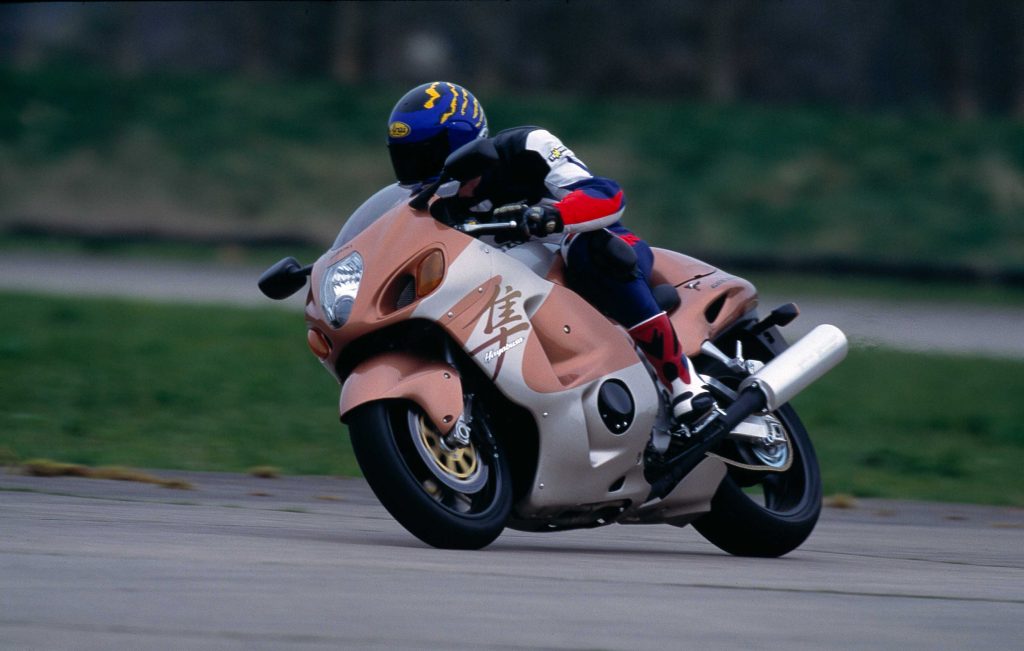
Suzuki’s development team had done a good job of making the big four a useful all-rounder. Its chassis layout echoed that of the GSX-R750, with a twin-beam aluminium frame, upside-down front forks, and six-piston Tokico front brake calipers. The frame and aluminium swing-arm were 15 per cent more rigid than the GSX-R’s equivalents.
The emphasis on aerodynamics started with the sharp nose that was facilitated by the “stacked” headlights, and by an instrument panel that seemed notably thin and high-tech at the time. The large front mudguard and bulbous tail section, designed with the help of many hours in a wind tunnel, also contributed to the slippery shape. The result was the lowest drag coefficient of any Suzuki streetbike.
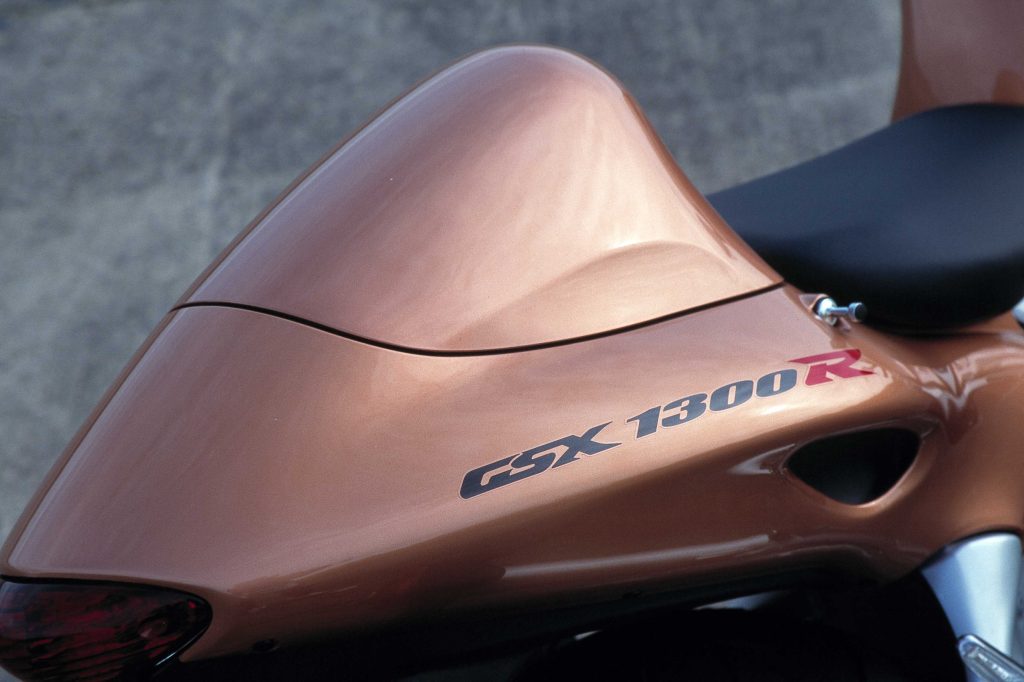
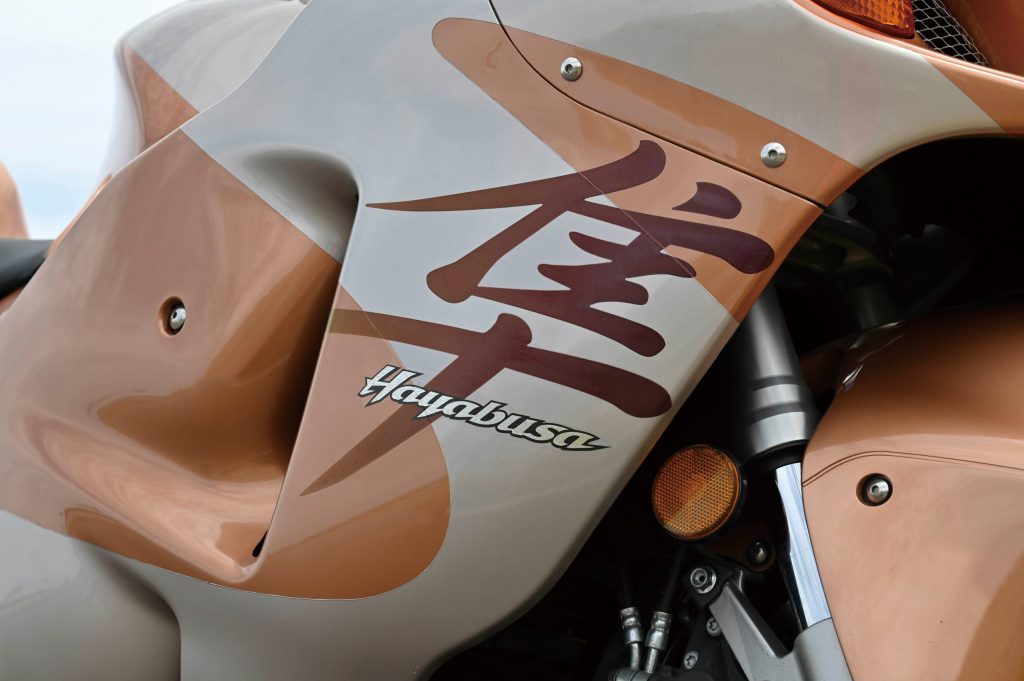
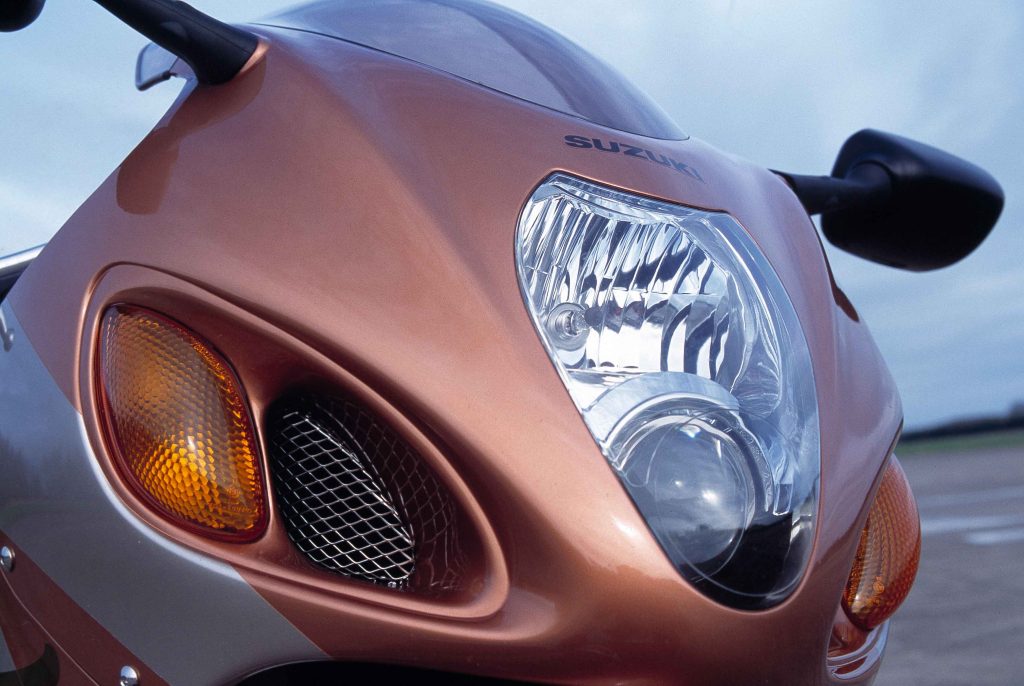
The distinctive styling – plenty preferred the word ugly – was very much deliberate, according to designer Koji Yoshiura. “The mission was to create a total new styling that would not be out of date within few years, and would be the ‘face’ of Suzuki,” he later said. “My aim was to create a somewhat grotesque design and make a strong initial impact.” He surely succeeded in that.
Beneath the bodywork the Hayabusa wasn’t especially high-tech. Its dohc, 16-valve engine had a similar layout to the GSX-R750 unit but incorporated a gear-driven balancer shaft that allowed it to be solidly mounted, increasing chassis rigidity. The SRAD (Suzuki Ram Air Direct) system helped force air into the engine via slots in the fairing nose, contributing to a hefty maximum output of 173bhp at 9,800rpm.
The Hayabusa’s acceleration was mind-warping, and not just at high revs; on the road it was the engine’s midrange power that took the breath away. Whether the needle was indicating 4,000rpm or 9,000rpm, the Hayabusa blasted forward like a guided missile. From a standstill it covered a standing quarter-mile in ten seconds, provided you could keep the front wheel near the ground.
Thankfully the chassis was capable of keeping up. The frame was indeed rigid, and the bike stayed rock solid even during high-speed testing. Credit also went to the suspension, which gave a firm ride yet soaked up bumps efficiently enough to make the Hayabusa respectably comfortable. Braking, grip and ground clearance were very adequate too.
I was less impressed by the low, non-adjustable screen, which provided little wind protection in normal use, and also obscured the instruments from a tall rider’s view. But it was more protective than the rival Super Blackbird’s screen, even so. And although the Honda retained many loyal followers, there was little doubt that, for riders into serious speed, the Hayabusa had replaced it at the top of the production bike pile.
A competitive price helped the Suzuki climb the sales charts in many markets, too, notably including the US, where it attracted a cult-like following and became the model of choice for sports bike customisers. At many major gatherings a ’Busa was deemed barely worth a glance unless blinged-up with a turbocharger, super-long swing-arm, huge rear tyre, lowered suspension and fancy paintwork.
Suzuki’s own accessory list was relatively dull, featuring Yoshimura silencers alongside practical items such as a taller screen and soft luggage. But the firm eventually responded to owners’ demands for even more performance. The first model update, in 2008, combined subtly reshaped bodywork with an enlarged, 1340cc engine that increased peak output to 194bhp.

This second-generation Hayabusa was seriously fast in standard form, and faster still when tuned and tweaked. Riders including Jarrod “Jack” Frost and Plymouth Suzuki dealer Mike Grainger broke European speed records on turbocharged ’Busas, Grainger recording 249.1mph on a turbocharged, street-legal bike.
In the US, Florida fish farmer Bill Warner was timed at 311.94mph in 2011, becoming the first rider to top 300mph on a non-streamliner motorcycle. Tragically, he was killed when trying to better that figure two years later. Hayabusa-engined bikes would also star in Pro Stock drag racing, covering the standing quarter-mile in under seven seconds and over 200mph at the hands of riders including Gaige Herrera and Richard Gadson.
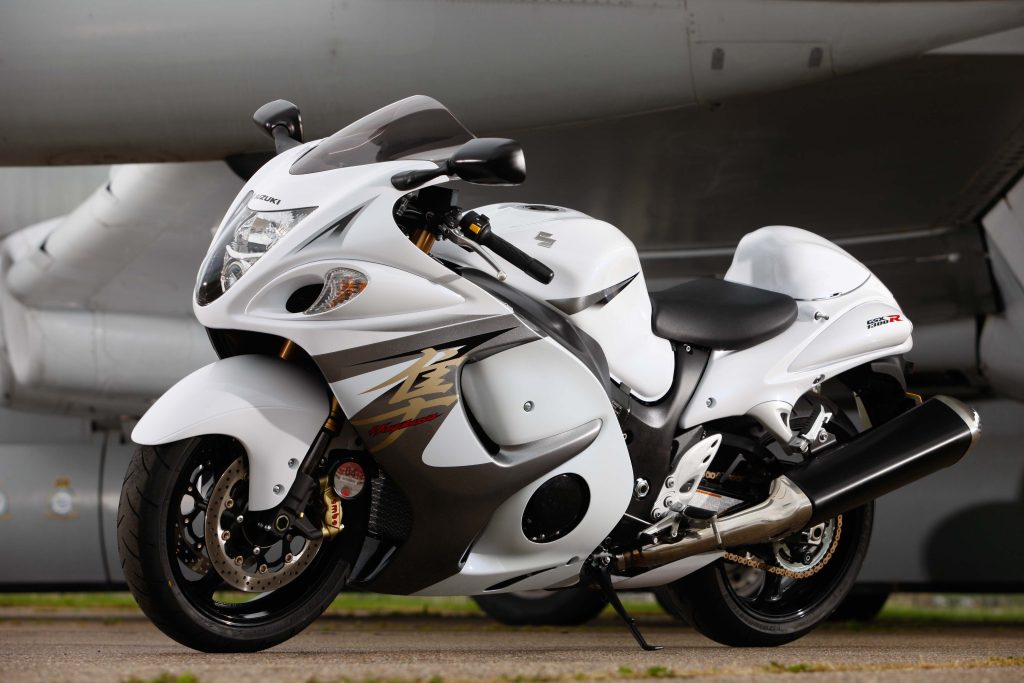
For 2013 the standard Hayabusa was updated again, though only with an uprated brake system featuring Brembo Monobloc front calipers, and the model’s first ABS system. The extra stopping power was welcome, though ironically the new feature almost proved the bike’s and my undoing when I rode it at Bruntingthorpe.
As I accelerated hard from a standstill at the top of the runway, the Hayabusa lifted its front wheel slightly despite my efforts to keep my weight forward. I didn’t notice that a small yellow light on the dashboard came on. Roughly two miles and 40 seconds later, I crossed the line at about 190mph, shut the throttle, slowed for a few seconds, sat up and squeezed the front brake lever.
The Hayabusa’s front wheel locked and snapped sideways, the front tyre squealing and leaving a black mark on the runway. Thankfully I reacted quickly enough to release the lever before crashing. The bike hadn’t developed a fault. Suzuki’s engineers had designed it to disable the ABS if the front and rear wheel speeds differed, a curious safety feature on a bike that wheelied so easily.
In 2019 the Hayabusa story looked as though it might be coming to an end, when the model was dropped from Suzuki’s range in Europe and many other markets (though not the States), due to tightening emissions legislation. At the same time the firm was rumoured to be developing a third-generation model featuring turbocharging to give a substantial power increase.
Those rumours were partly true: an updated Hayabusa appeared for 2021 but it had no turbo and its power had been reduced for the first time, to 187bhp: cue predictable outcry on social media. Suzuki had needed to detune the engine for Euro 5 regulations, and couldn’t take the manufacturers’ familiar route of increasing capacity to compensate, because the existing 1340cc was right on the limit. At least the revised cylinder head, injection and exhaust gave a useful boost to midrange performance.
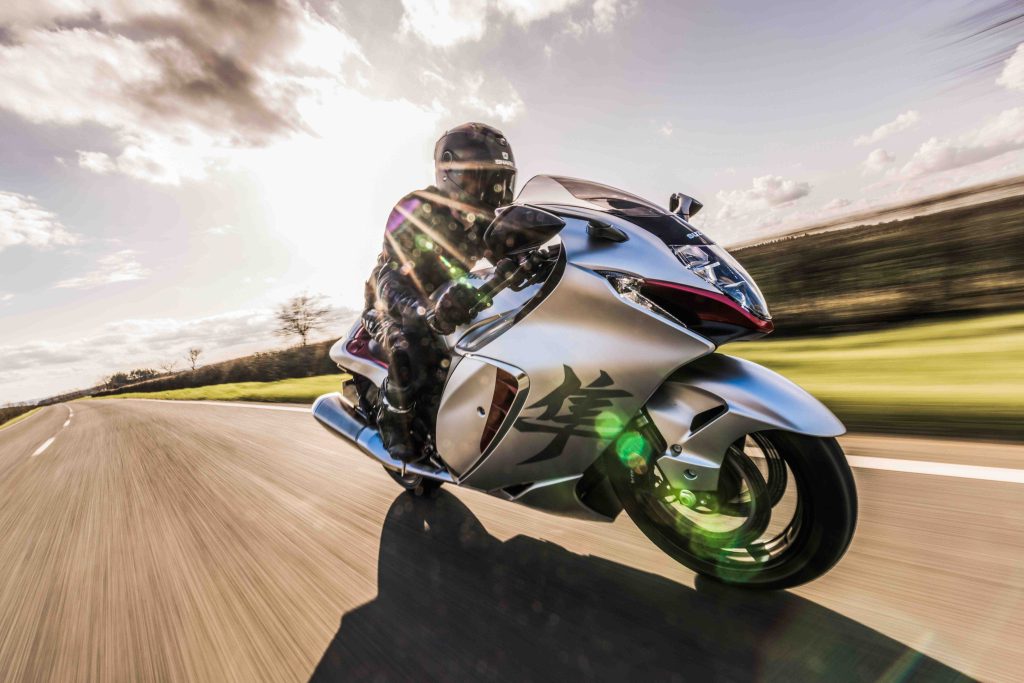
Any notion that losing 7bhp at the top end was a drawback seemed ludicrous on riding this Hayabusa, as it blasted towards its 11,000rpm limit through the gears, helped by the quick-shifter that was now standard fitment. Suzuki was probably justified in claiming that the new bike’s added midrange output made it slightly quicker in most situations. It certainly upheld the model’s reputation for straight-line speed.
Chassis performance was generally fine, too – not surprisingly, given that the major components and geometry were unchanged. Steering was as precise and neutral as ever; the suspension felt well-damped. Occasionally, though, the bike hit a bigger bump with spine-crunching force to provide a painful reminder that the Hayabusa’s rear shock adjustment required an ancient device called a C-spanner, while many modern superbikes offered the refinement of semi-active suspension.
Three years on, the electronics of the current Hayabusa 25th Anniversary remain at the level that many bikes reached more than a decade ago. It has no digital speedometer, self-cancelling indicators, automatic cruise control or even keyless ignition. Instead you get big round dials for speed and revs, and the similarly traditional invitation to scratch the top yoke with a flailing key fob.
Which is just how the hardcore Hayabusa crowd like it. This is a superbike whose roots and reason for existence remain in the last millennium. Amid today’s digital sophistication it’s an analogue anarchist that still packs a hefty punch, and generates adrenaline with every tweak of its throttle. After 25 years the Hayabusa remains in production but must be approaching retirement. It will leave a big gap when it’s gone.
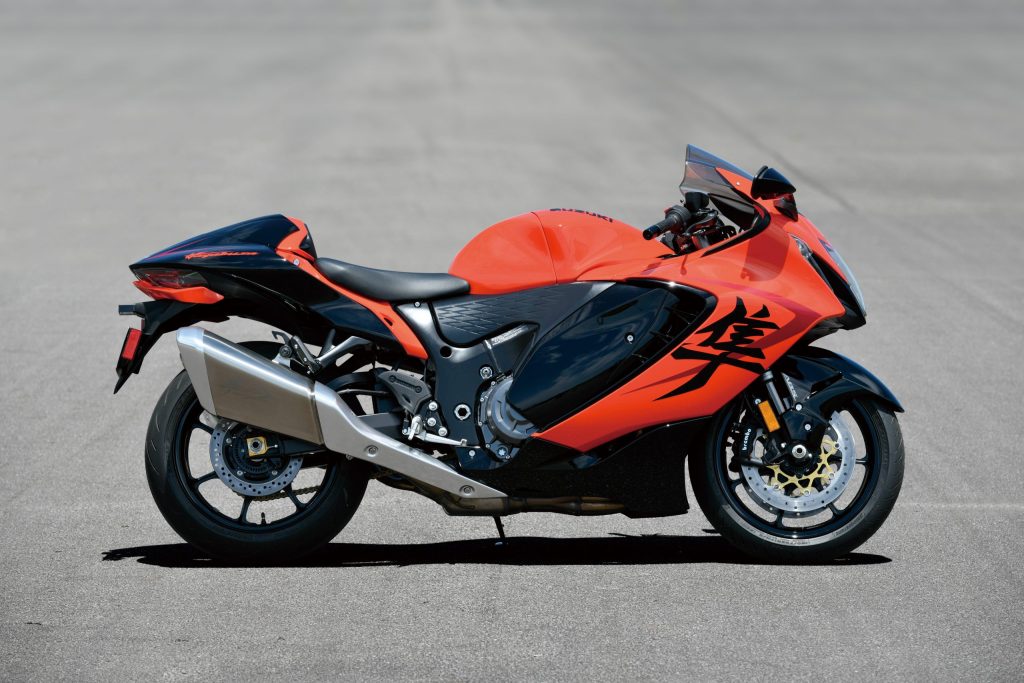
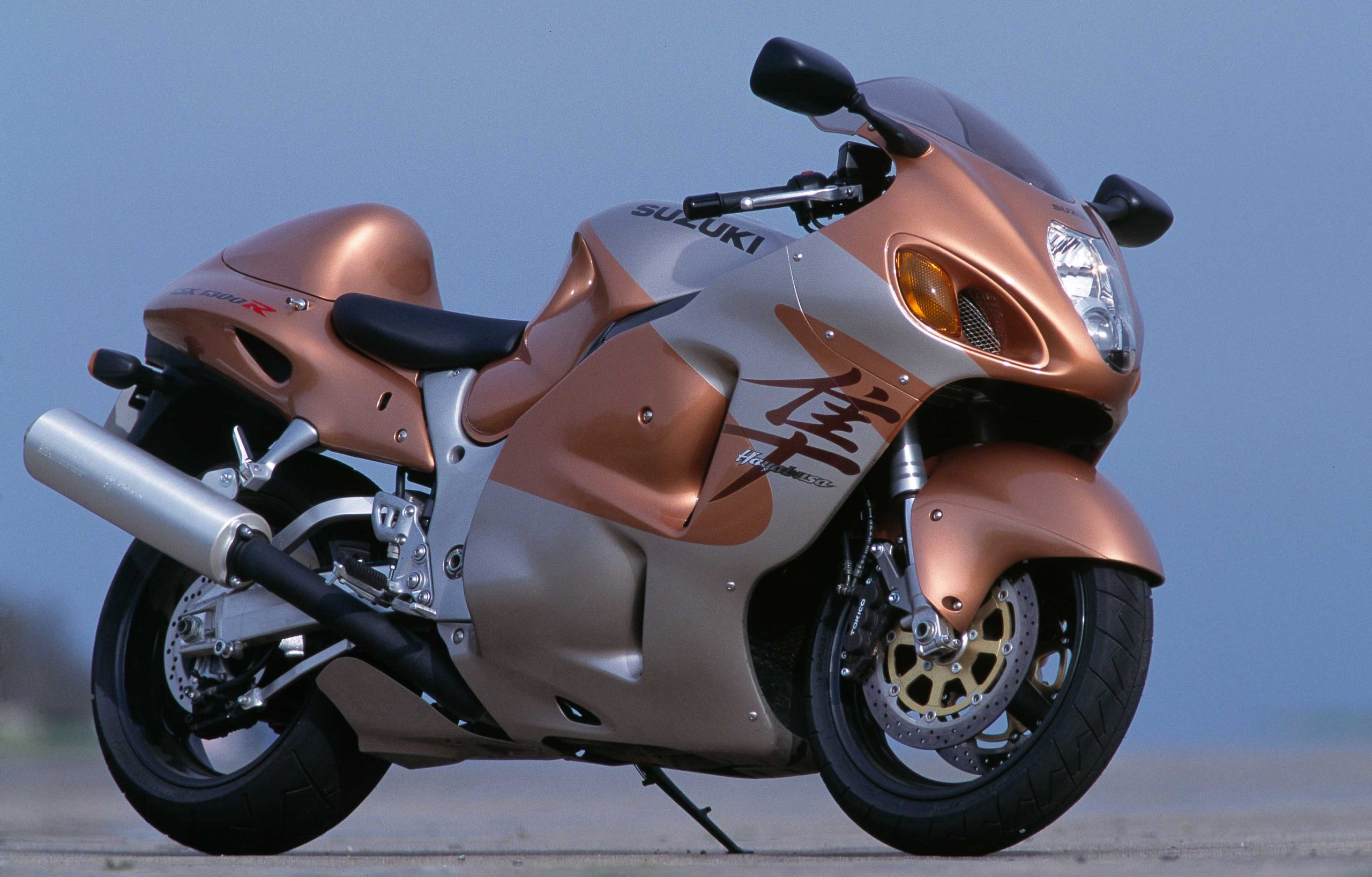


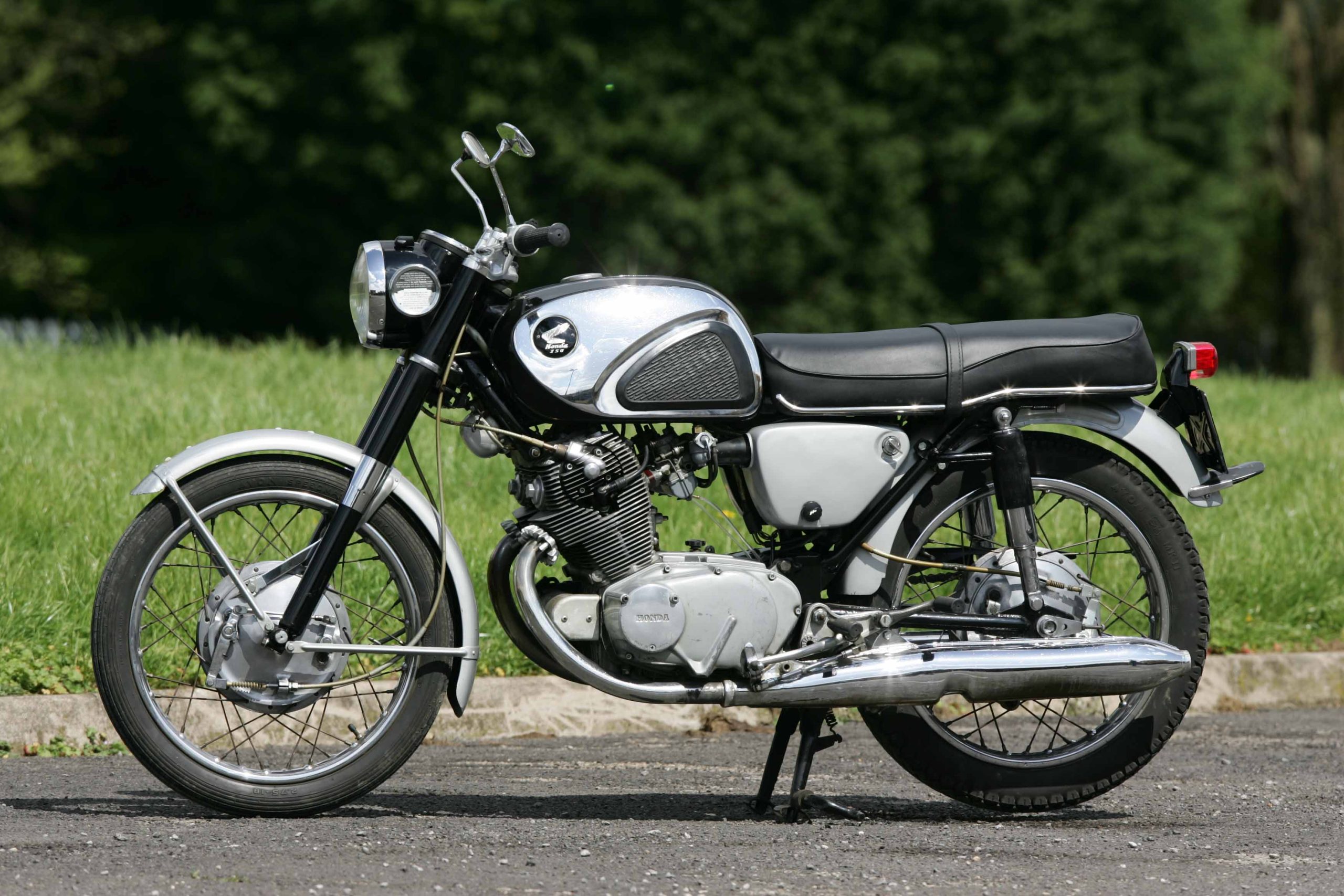


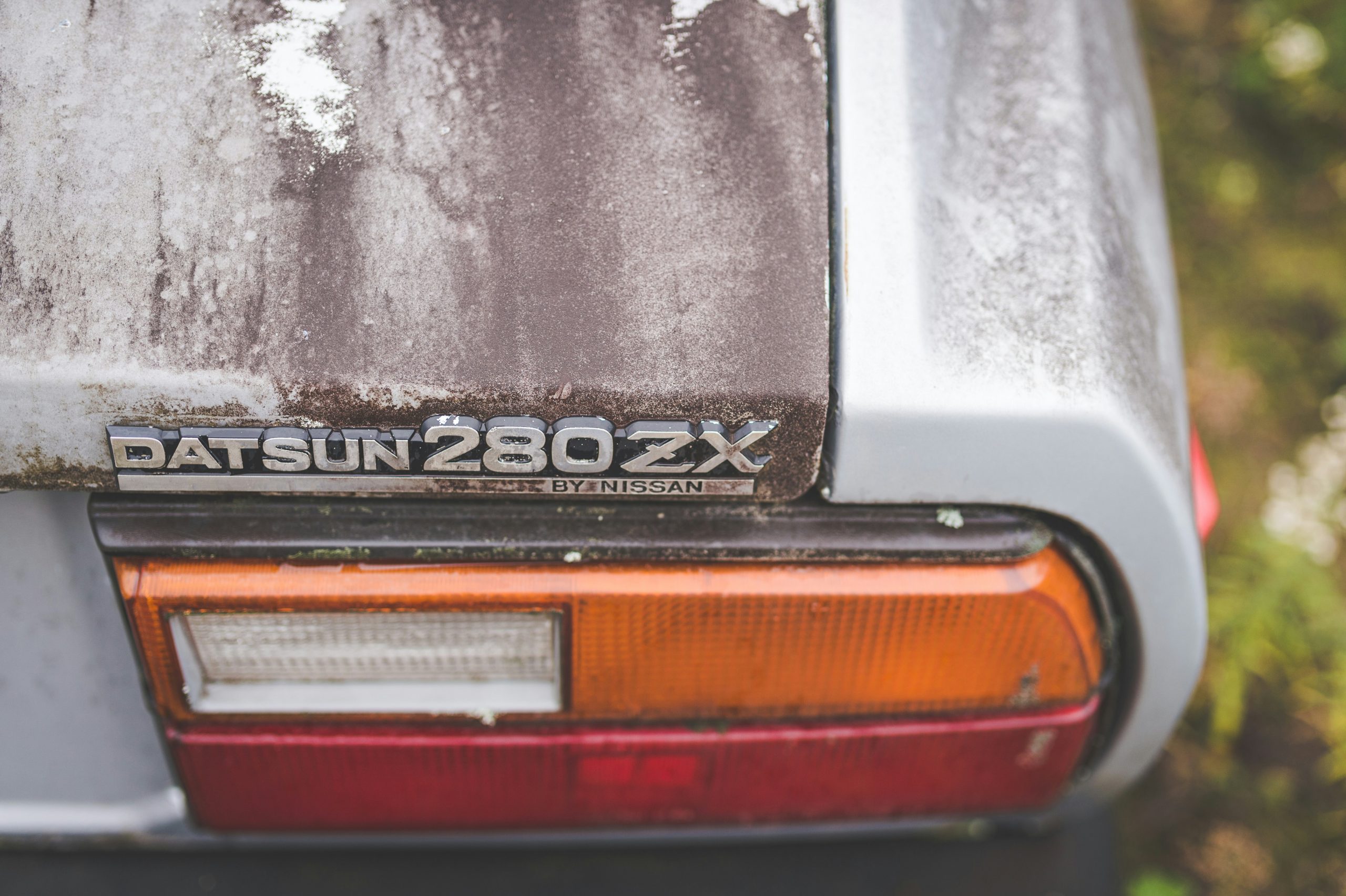
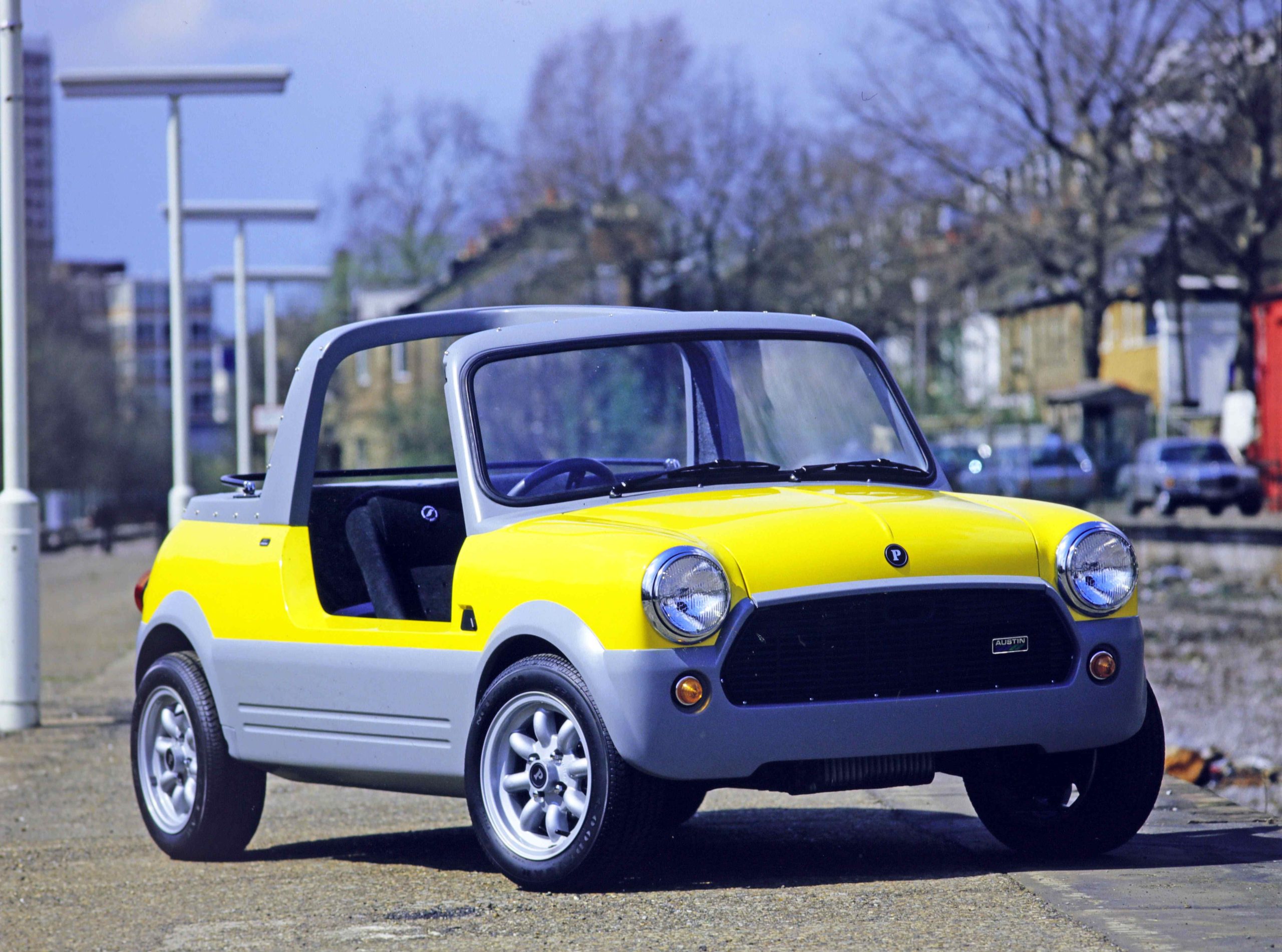
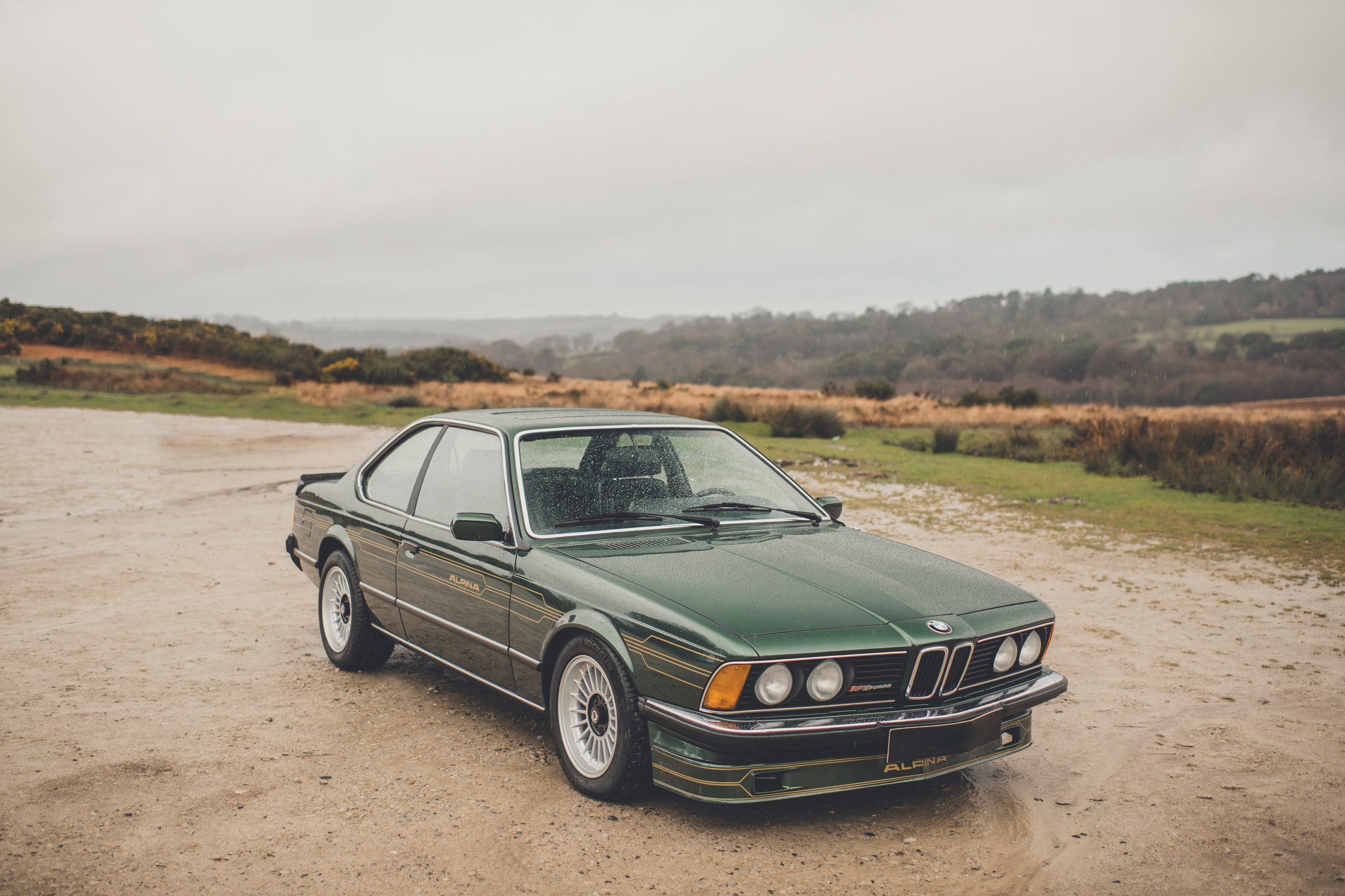

Classic. Keep sending.
It would never have been proposed were it not for the Honda Blackbird.
That bike you have on here I think it’s my bike. Chassis. Number 41 and there is a video of it with Shaky and 3 other rides as well which is my bike and I still have it. And it still goes well.
I’ve still got my gen 1 2000 model..it still goes well,and if I’m honest,it still looks good along side brand new bikes.